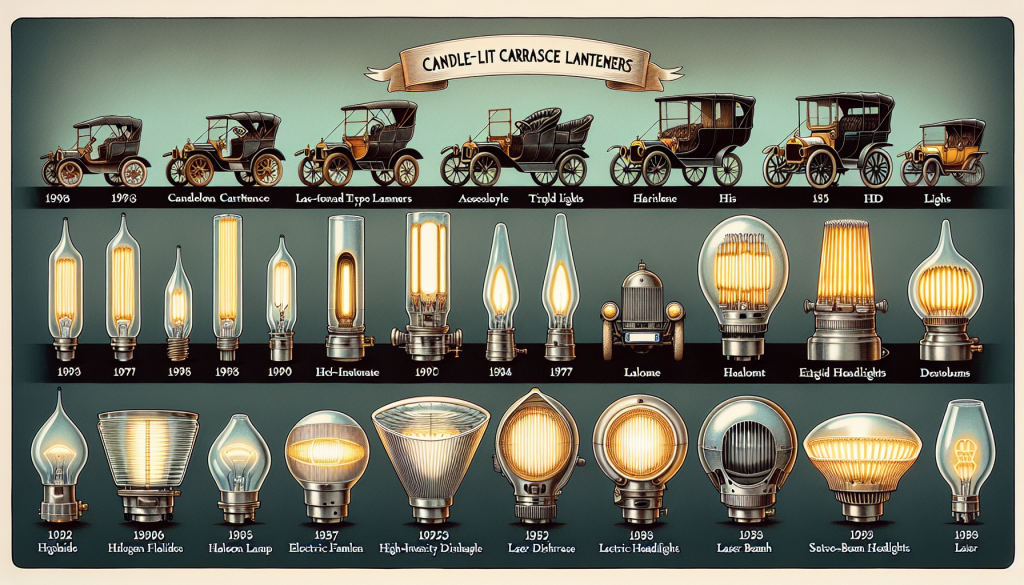
The Evolution of Headlights: From Candles to Laser Beams
When you think of headlights, what comes to mind? The soft glow of candles guiding a horse-drawn carriage through the night? Or the bright beams of modern cars piercing through the darkness? As we rely more and more on technology to enhance our driving experience, it’s easy to forget the humble beginnings of the automotive headlight. Let’s take a journey through time and explore the evolution of headlights, from simple candles to cutting-edge laser beams.
Early Headlights: The Age of Candles
Believe it or not, the first “headlights” weren’t even mechanical. In the late 1700s, drivers attached candles to their carriages to light the way. While effective, these early headlights were incredibly dim and had a short lifespan. Plus, they posed a significant fire hazard.
It wasn’t until 1880 that electric headlights made their debut. Initially, they were only available as an expensive add-on option for luxury vehicles. These early electric headlights were powered by a battery and were known for their weak beams and constant need for maintenance.
The Rise of Halogen: Brighter and More Efficient
In the 1960s, halogen headlights revolutionized the industry. Halogen bulbs were much brighter and more durable than their predecessors and were quickly adopted by car manufacturers worldwide. The halogen headlight was the standard for nearly 50 years, providing reliable and efficient lighting for drivers.
However, as technology advanced, halogen headlights started to show their limitations. They emitted a significant amount of heat, which made them energy inefficient. This heat also leads to premature fading of the headlight lenses, causing a decrease in brightness over time.
Enter LED Headlights: A Game-Changing Alternative
With the rise of LED technology, car manufacturers began incorporating LED headlights into their vehicles. LED headlights are known for their energy efficiency, longevity, and brightness. They consume significantly less power, emit less heat, and can last up to 25 times longer than halogen bulbs. Plus, LED headlights can be shaped into any form, allowing for unique and sleek designs.
Aside from providing significant energy and cost savings, LED headlights also offer improved visibility for drivers. The bright white light produced by LED headlights closely mimics natural daylight, making it easier for drivers to see the road and potential hazards.
The Future is Here: Laser Headlights
In recent years, car manufacturers have been experimenting with laser headlights, taking headlight technology to the next level. Laser headlights use highly concentrated beams of light to provide a brighter and more extensive range of illumination. They also have a longer lifespan than LED headlights and require even less energy to operate.
However, laser headlights are still relatively new and only available in high-end luxury vehicles due to their high production costs. They are also subject to strict regulations, making them difficult to implement on a mass scale. But as technology continues to advance, it’s possible that laser headlights may become the standard in the future.
The Evolution Continues
From humble candles to powerful laser beams, the evolution of headlights is a testament to the continuous advancements in technology. With each new innovation, we see improved safety, efficiency, and convenience for drivers on the road. As we look to the future, we can only imagine what exciting developments lie ahead for headlight technology.
Conclusion
So the next time you turn on your car’s headlights, take a moment to appreciate how far they have come. From the dim flicker of candles to the futuristic glow of laser beams, headlights have truly evolved before our eyes. And who knows, maybe one day we’ll be driving with headlights we can’t even imagine yet.
